I had been to Barton Park in the morning, but the day was beautiful, so I headed back out to the Cooks River Boat Harbour at dusk. The day before, on the bird survey, I had seen one of the Tawny Frogmouths sitting on the nest. I was now after some photos of the pair of birds swapping roles at dusk.
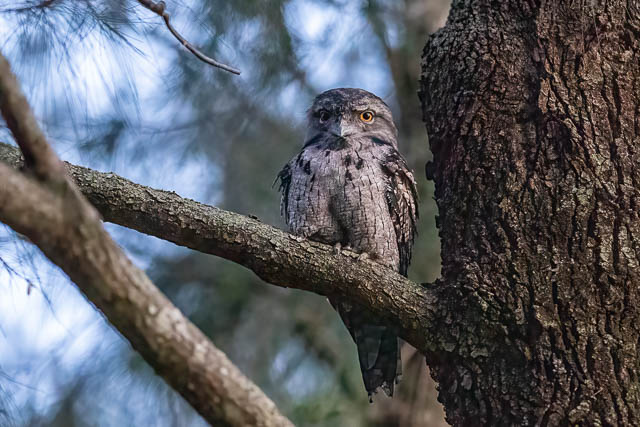
When I arrived at the Boat Harbour, I was surprised to see the nest empty. Perhaps one of the birds was trying out the nest to see if it was suitable, or perhaps it was sitting there as it thought there may be some eggs ready to be laid? I am not sure how these birds work. Clutch size for Tawny Frogmouths can range from one to three eggs. Often when birds lay multiple eggs like this, they can be laid a few days apart, and incubation is started when all are laid. But you would also think the birds would be close to the nest to protect any eggs. On this occasion, I could not spot either of the birds near the nest. The closest was perched about ten metres away.
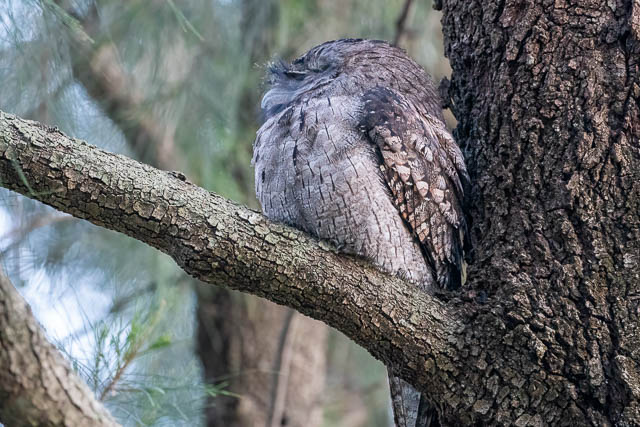
The one I had seen on the nest earlier was the female. Its usual for the male to sit on the nest during the day and the female at night. But day or night – its the female that sits on the nest to provide the eggs. This evening, I only spotted the male (at first).
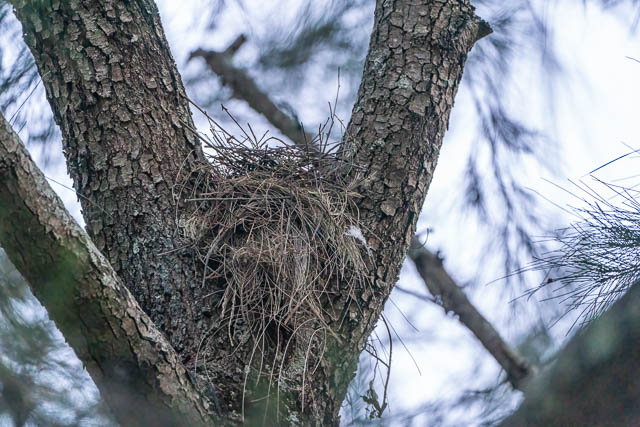
I went back and watched the male. I had arrived around 5:30 pm, and it didn’t start to wake up until 5:47 pm. This was right on the sunset time for the day.
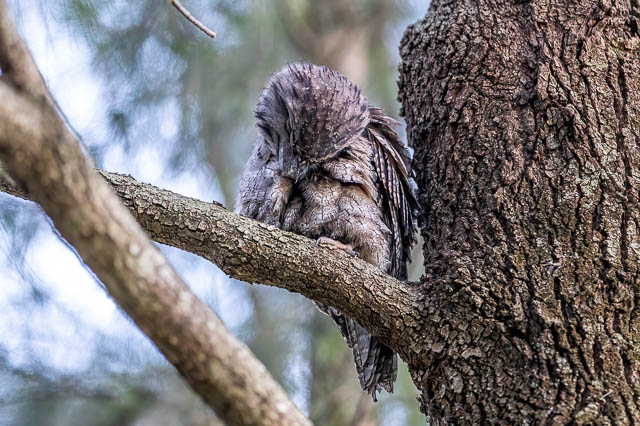
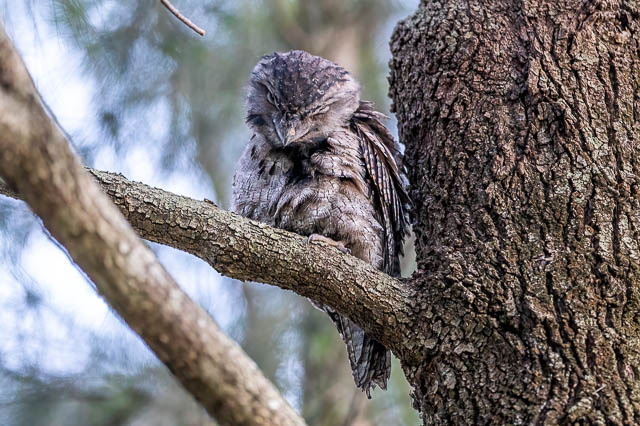
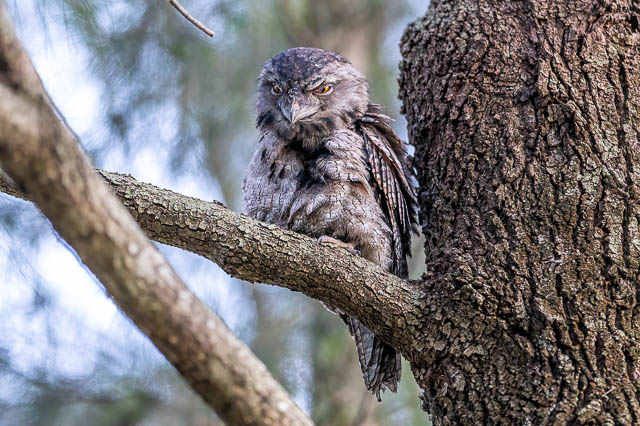


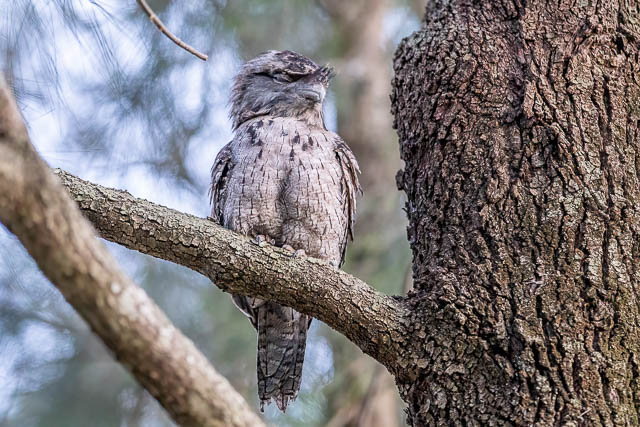

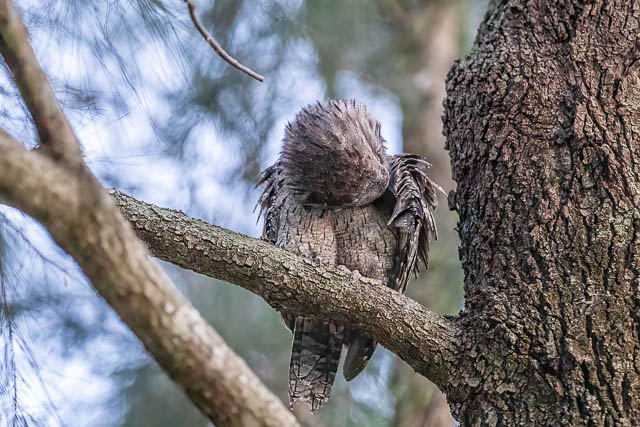
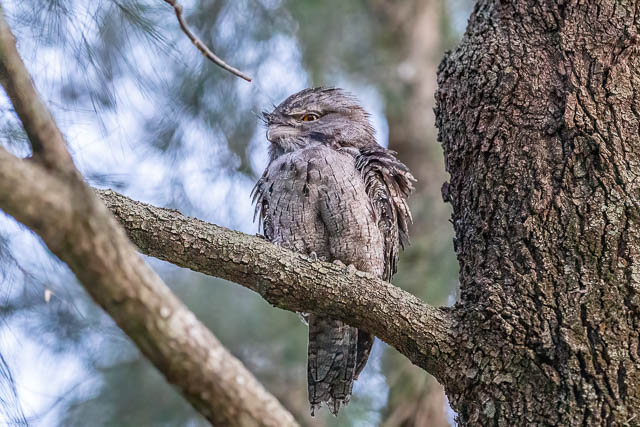
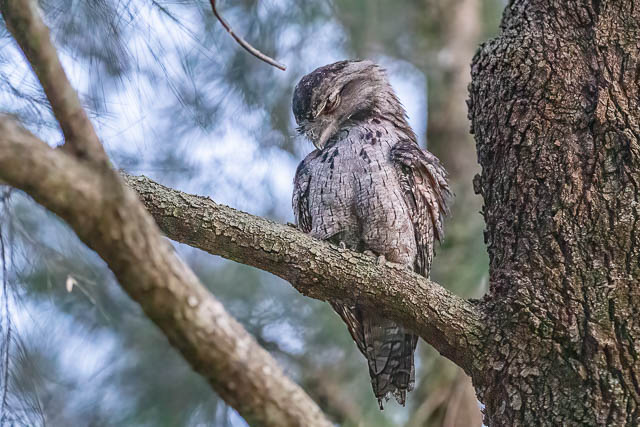
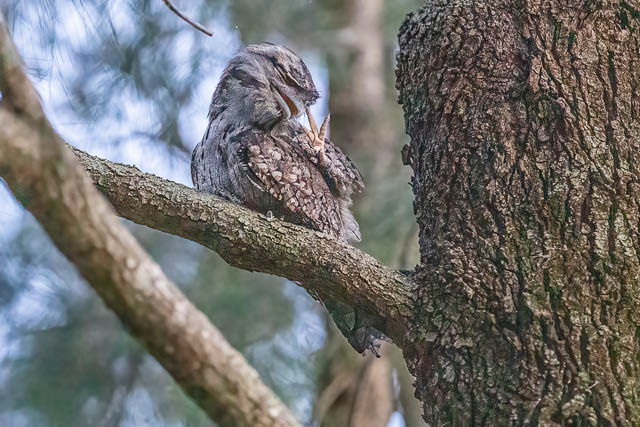
In the next photo, the bird is looking up because two Noisy Miners came and landed nearby and made a noise. They didn’t stay long.

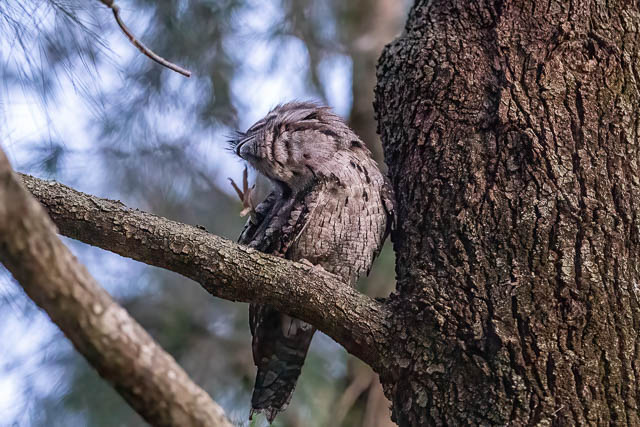
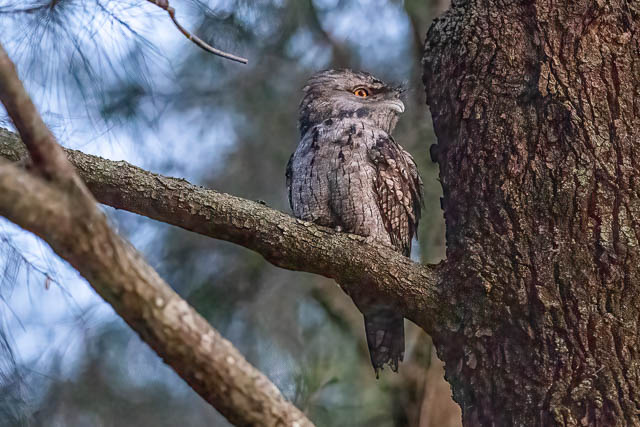
It took a fair while for it to fully wake up. It then did some wing stretches.
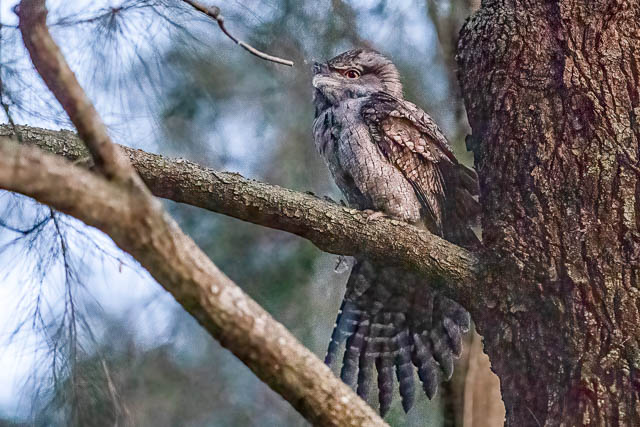
It then moved a bit out along the branch.

It was now toilet time.
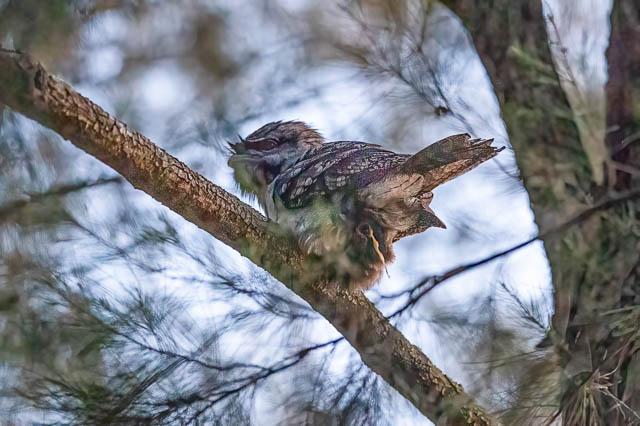
It then flew completely silently over to near the houses, about 40 m away. I soon spotted it.
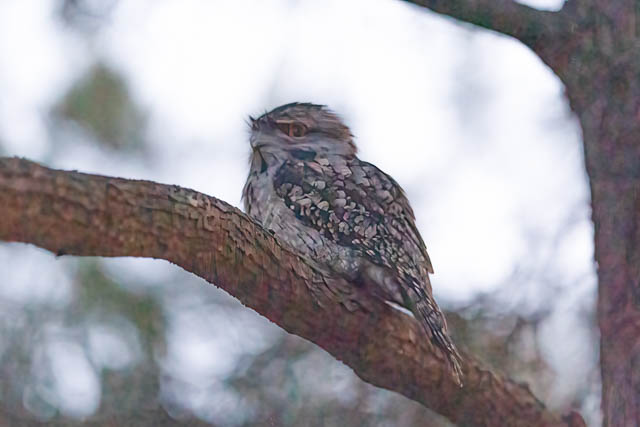
And nearby, I spotted the female.
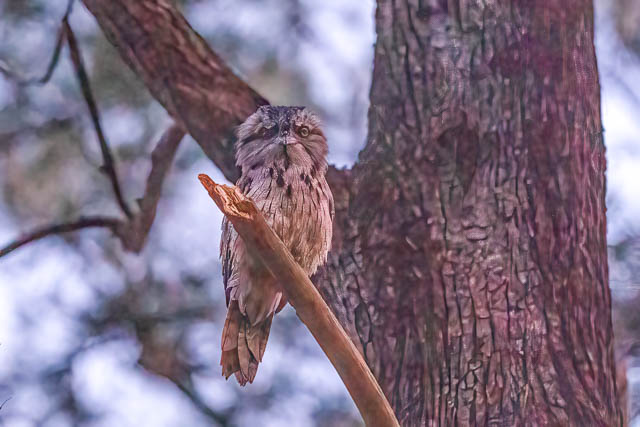
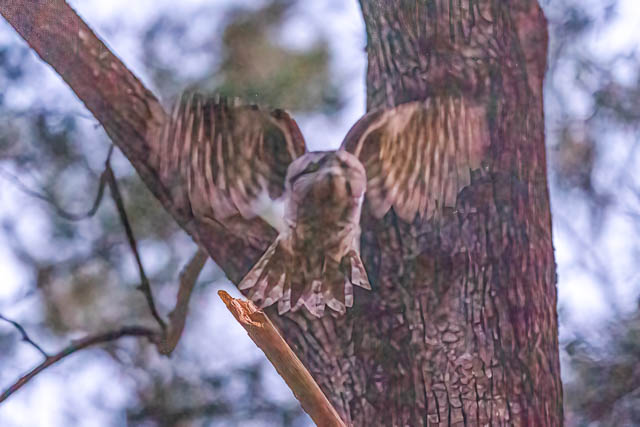
They both soon flew off. This was about 6:08 pm. It had been very interesting watching all this. I did not disturb the birds using artificial light. I used a 135 mm f 1.8 lens with high ISO’s.
